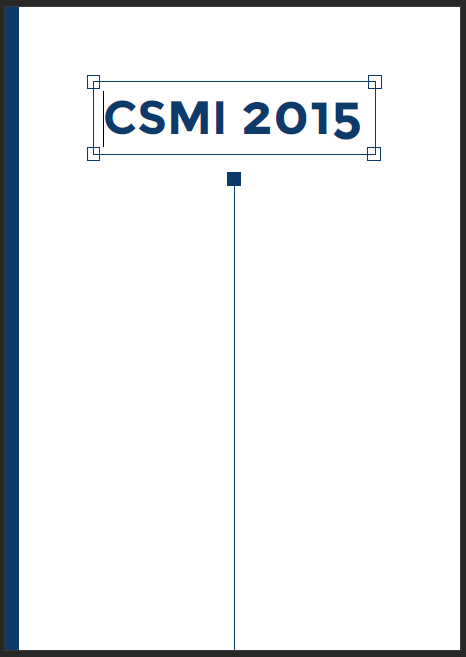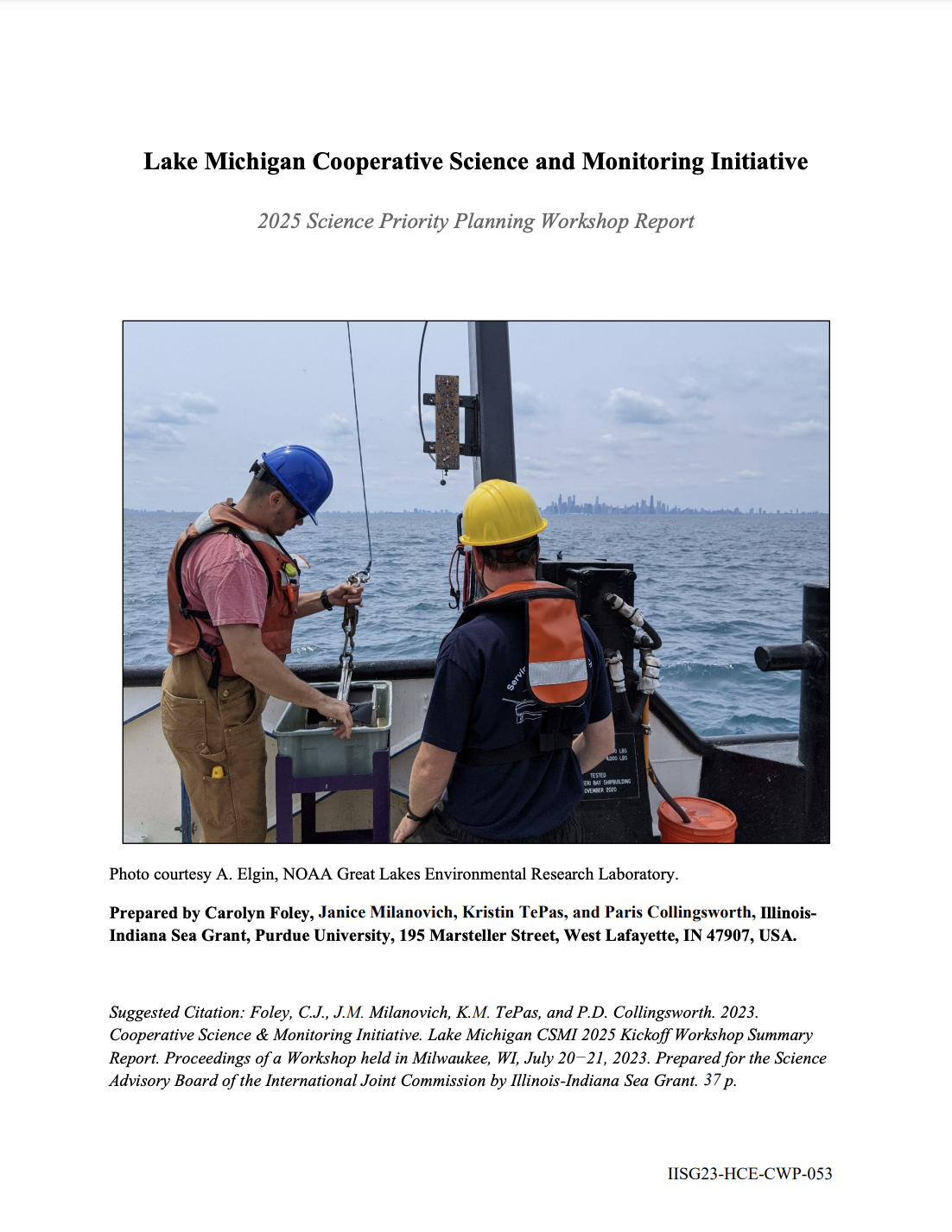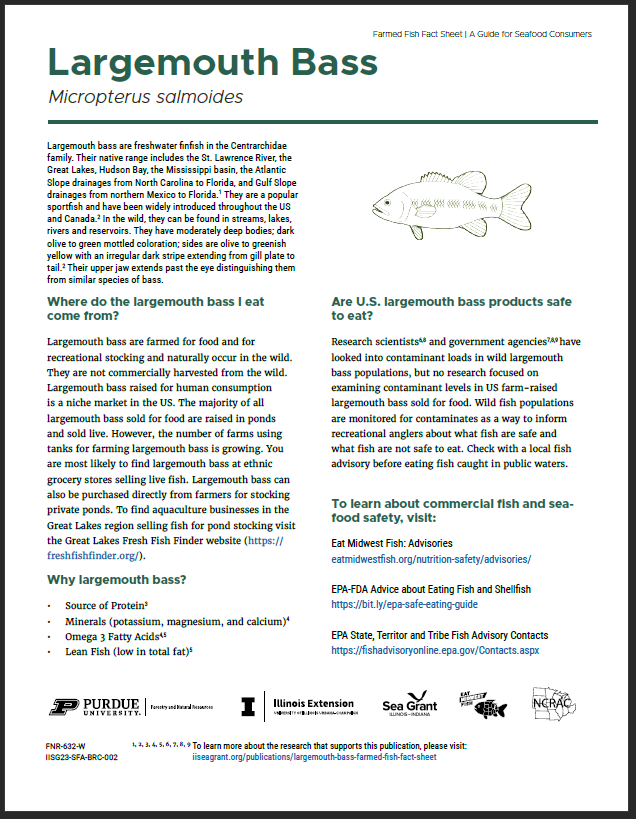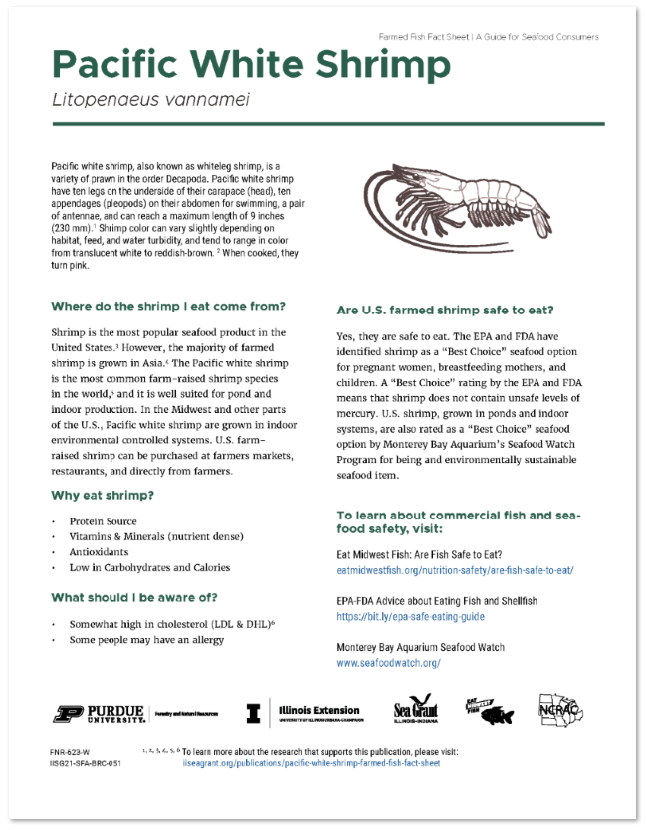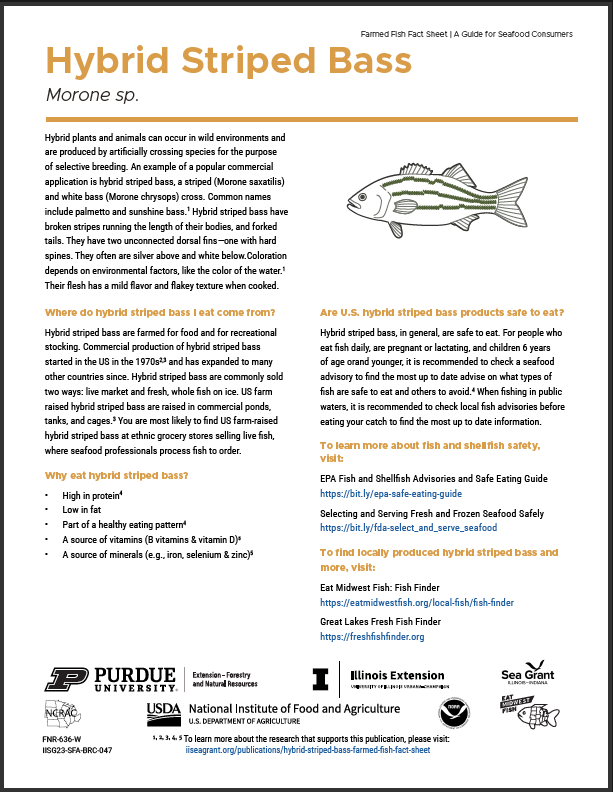
File Size: 3.28 MB
Year: 2023
This is the eleventh in a series of consumer guides that describe fish and shellfish farmed in the Midwest region of the United States. (See Freshwater Prawn Farmed Fish Fact Sheet, Largemouth Bass Farmed Fish Fact Sheet, Atlantic Salmon Farmed Fish Fact Sheet, Walleye Farmed Fish Fact Sheet, Yellow Perch Farmed Fish Fact Sheet, Tilapia Farmed Fish Fact Sheet, Rainbow Trout Farmed Fished Fact Sheet, Pacific White Shrimp Farmed Fish Fact Sheet, American Paddlefish Farmed Fish Fact Sheet, and Channel Catfish Farmed Fish Fact Sheet). The fact sheet also includes culinary characteristics, cooking tips and a recipe for Herb & Lemon Roasted Bass.
References:
- Hodson, R. 1989. Hybrid Striped Bass Biology and Life History. Southern Regional Aquaculture Center (SRAC) Publication No. 300.
- FAO 2023. MORONIDAE. Cultured Aquatic Species Information Programme. Text by Harrell, R. M.. Fisheries and Aquaculture Division [online]. Rome. Updated 2016-02-05 [Retrieved Thursday, August 10th 2023]. Available online: https://www.fao.org/fishery/en/culturedspecies/morone_hybrid/en.
- Hybrid Striped Bass Production Markets and Marketing report. Available online at: https://fisheries.tamu.edu/files/2013/09/Hybrid-Striped-Bass-Production-Markets-and-Marketing.pdf.
- U.S. Department of Health and Human Services and U.S. Department of Agriculture.
2020-2025 Dietary Guidelines for Americans. 9th Edition. December 2020. Available online at: https://www.dietaryguidelines.gov/sites/default/files/2020-12/Dietary_Guidelines_for_Americans_2020-2025.pdf. - Judy Sheeshka & Elaine Murkin (2002) Nutritional Aspects of Fish Compared with Other Protein Sources, Comments on Toxicology, 8:4-6, 375-397, DOI: 10.1080/08865140215065. Available online at: https://doi.org/10.1080/08865140215065.
- Wendy McKelvey, Moses Chang, John Arnason, Nancy Jeffery, Judith Kricheff, Daniel Kass, Mercury and polychlorinated biphenyls in Asian market fish: A response to results from mercury biomonitoring in New York City, Environmental Research, Volume 110, Issue 7, 2010, Pages 650-657. Available online at: https://www.sciencedirect.com/science/article/pii/S0013935110001155.

